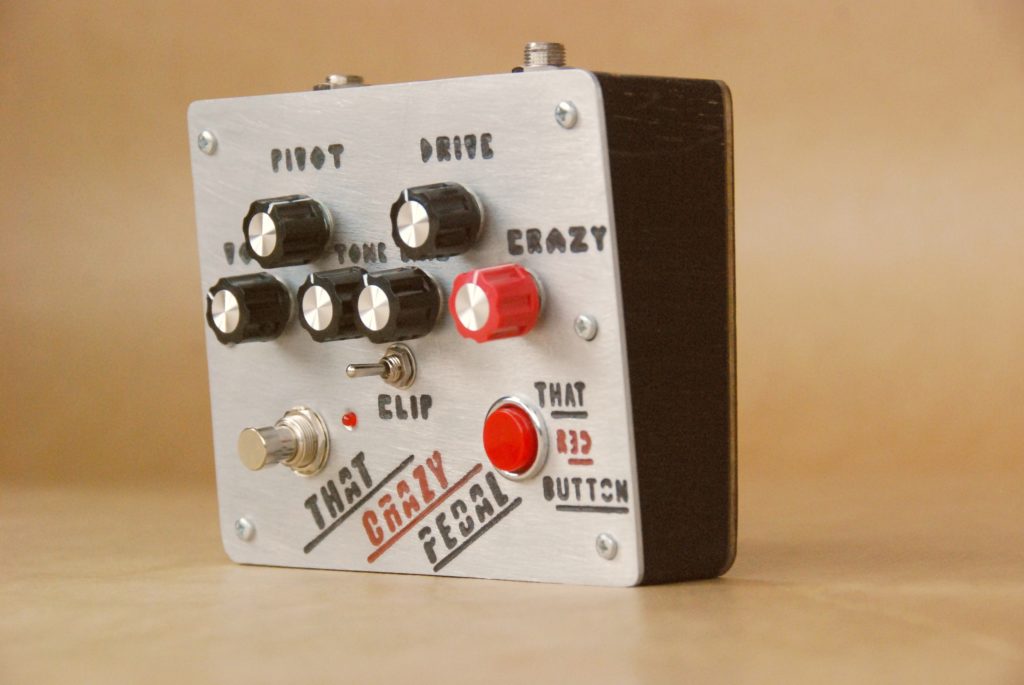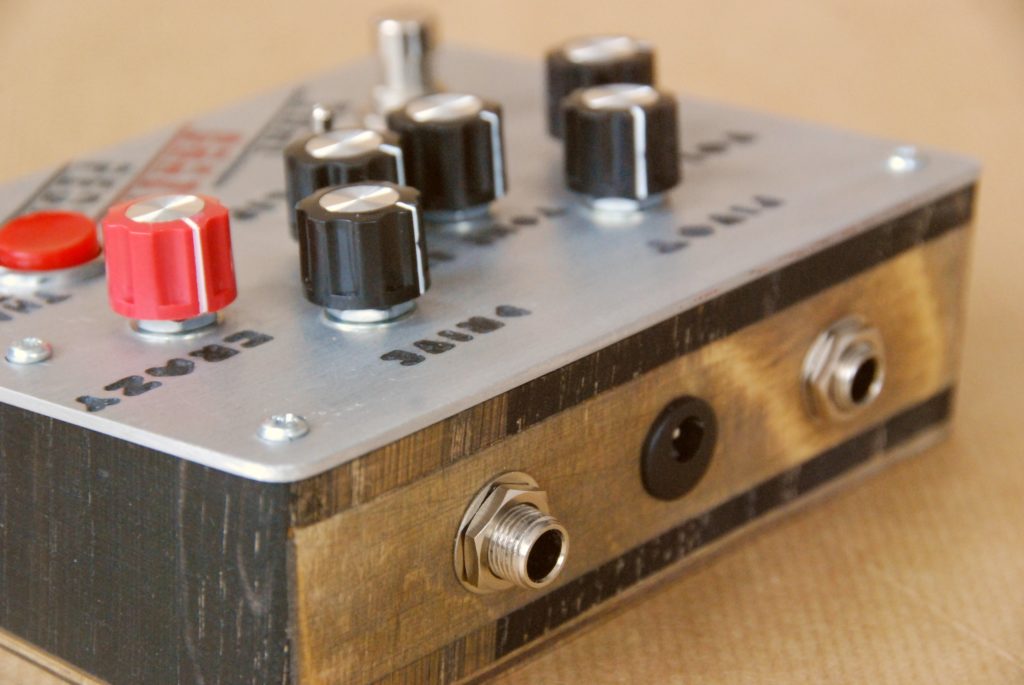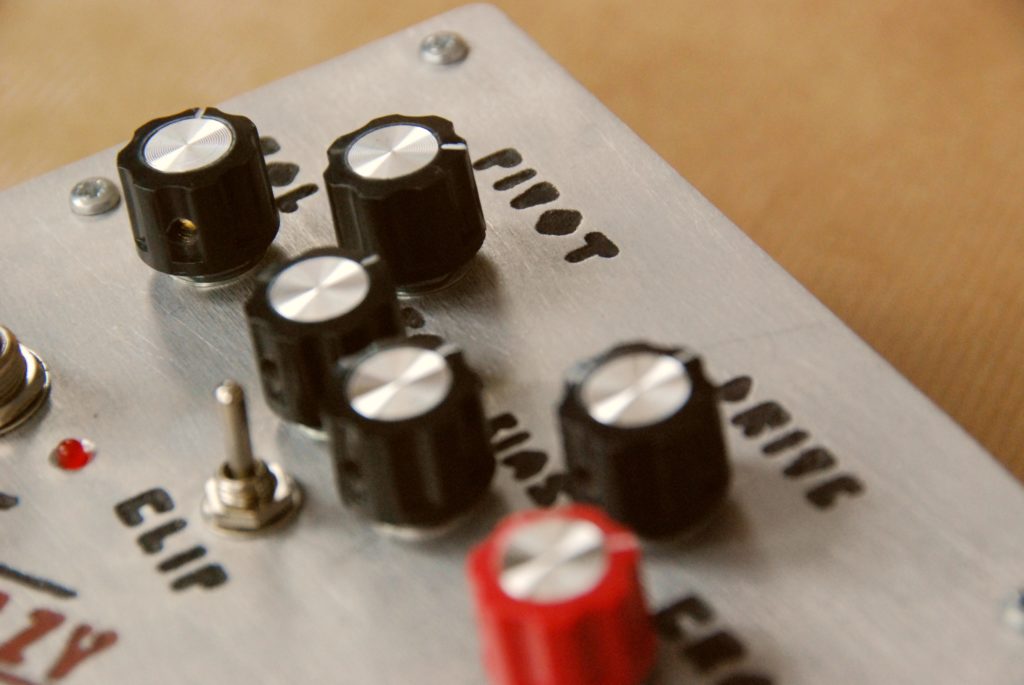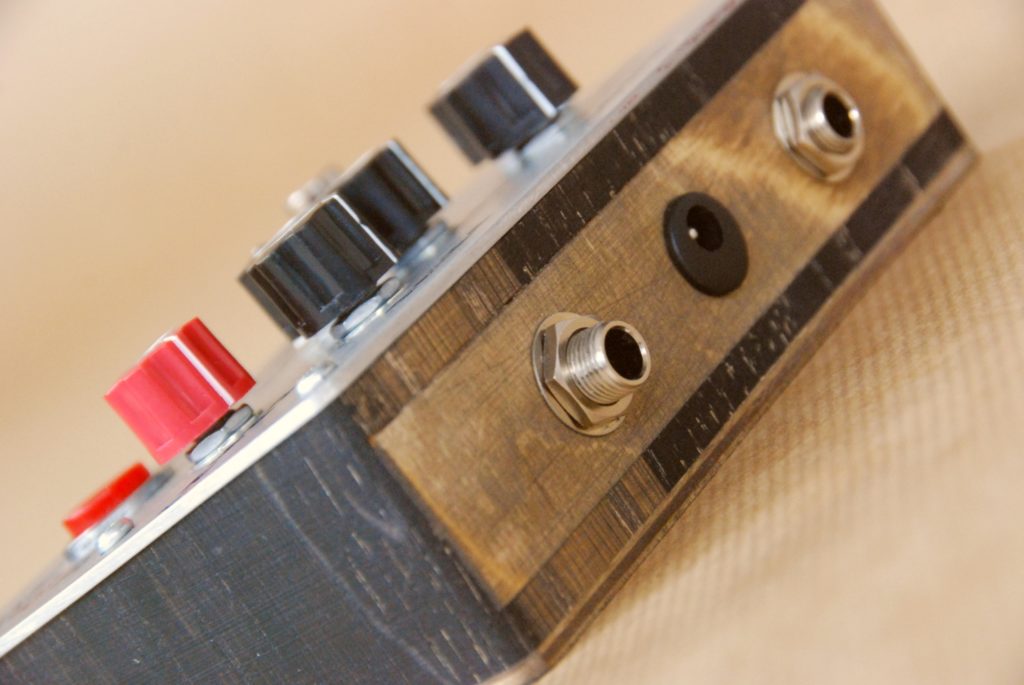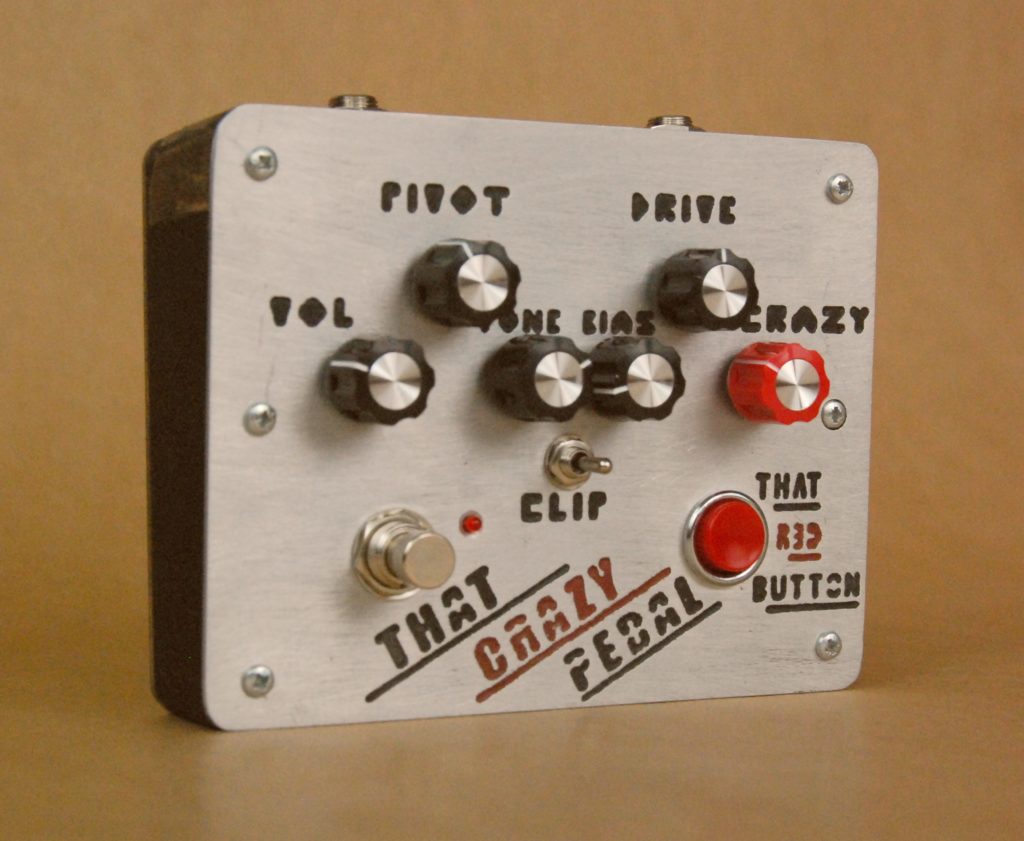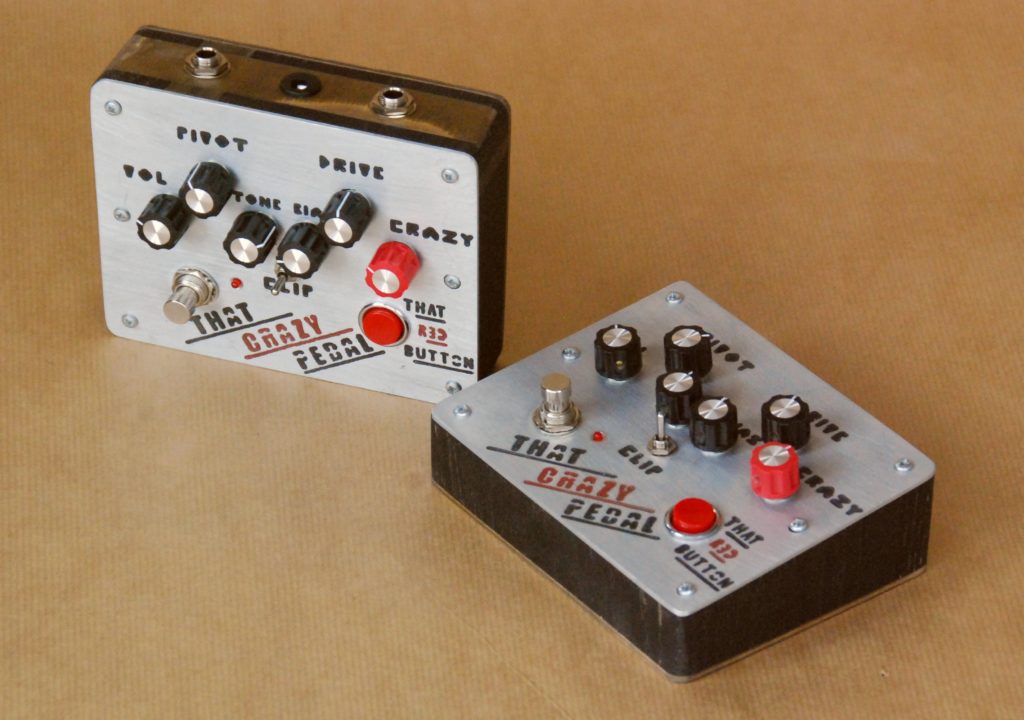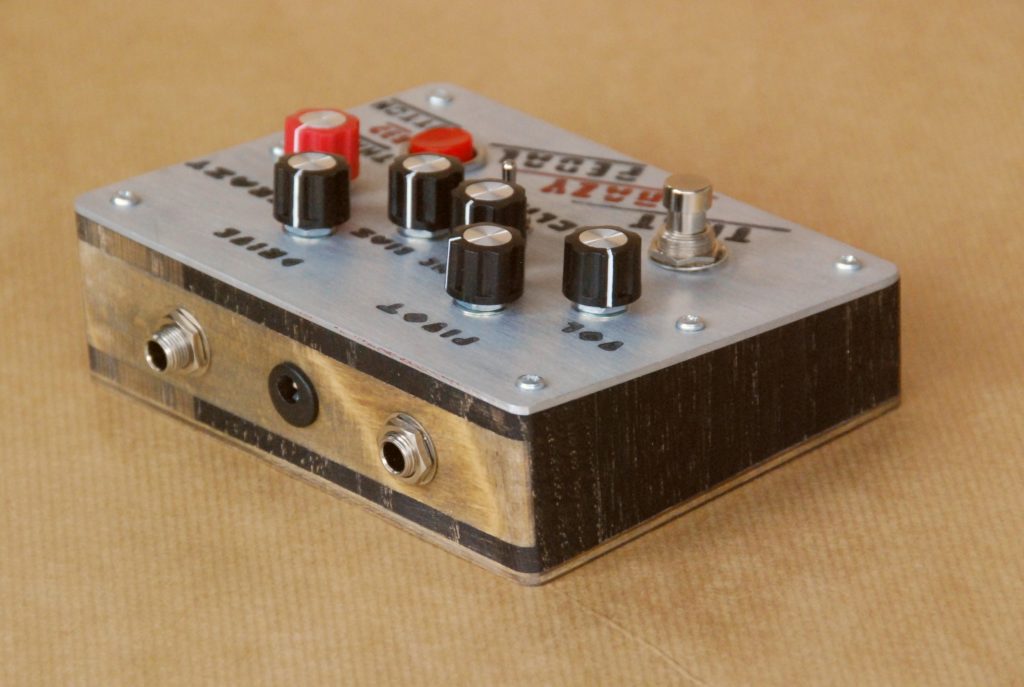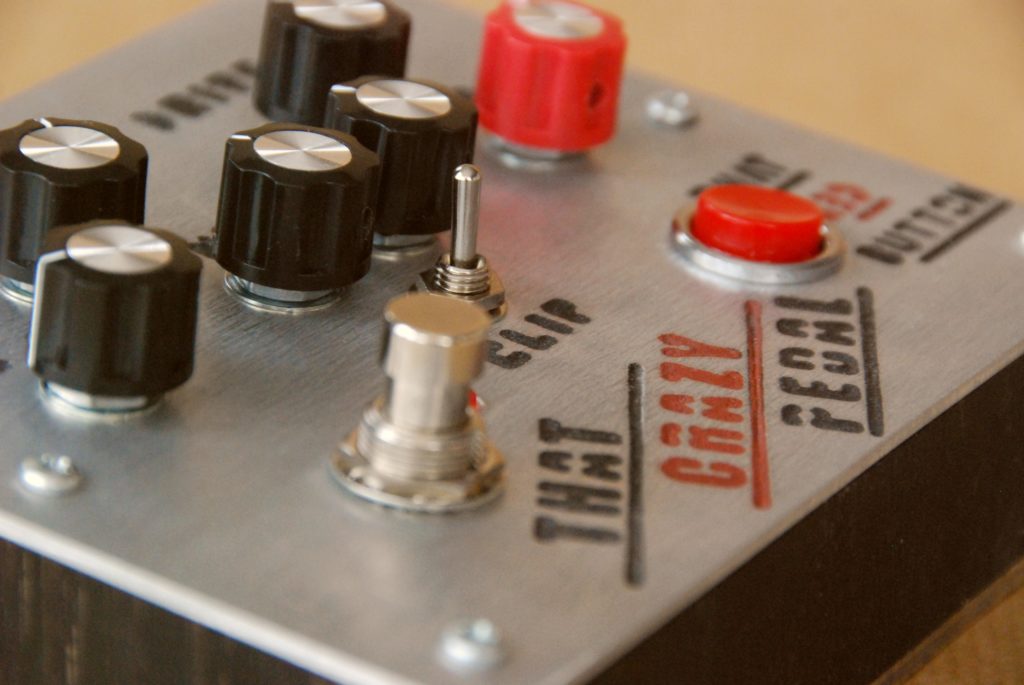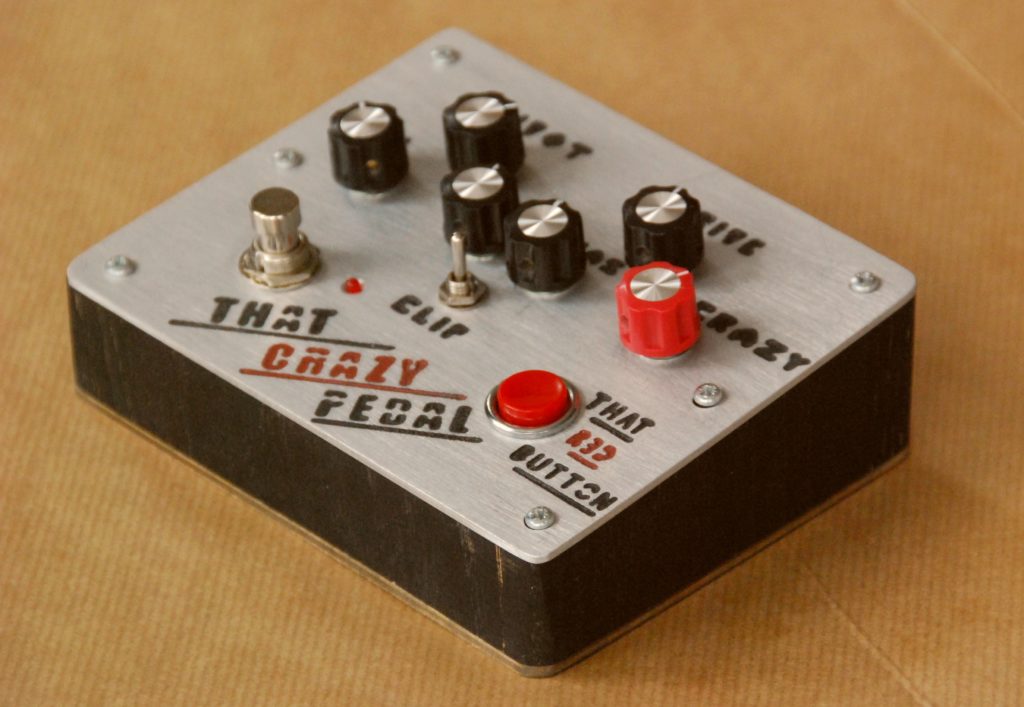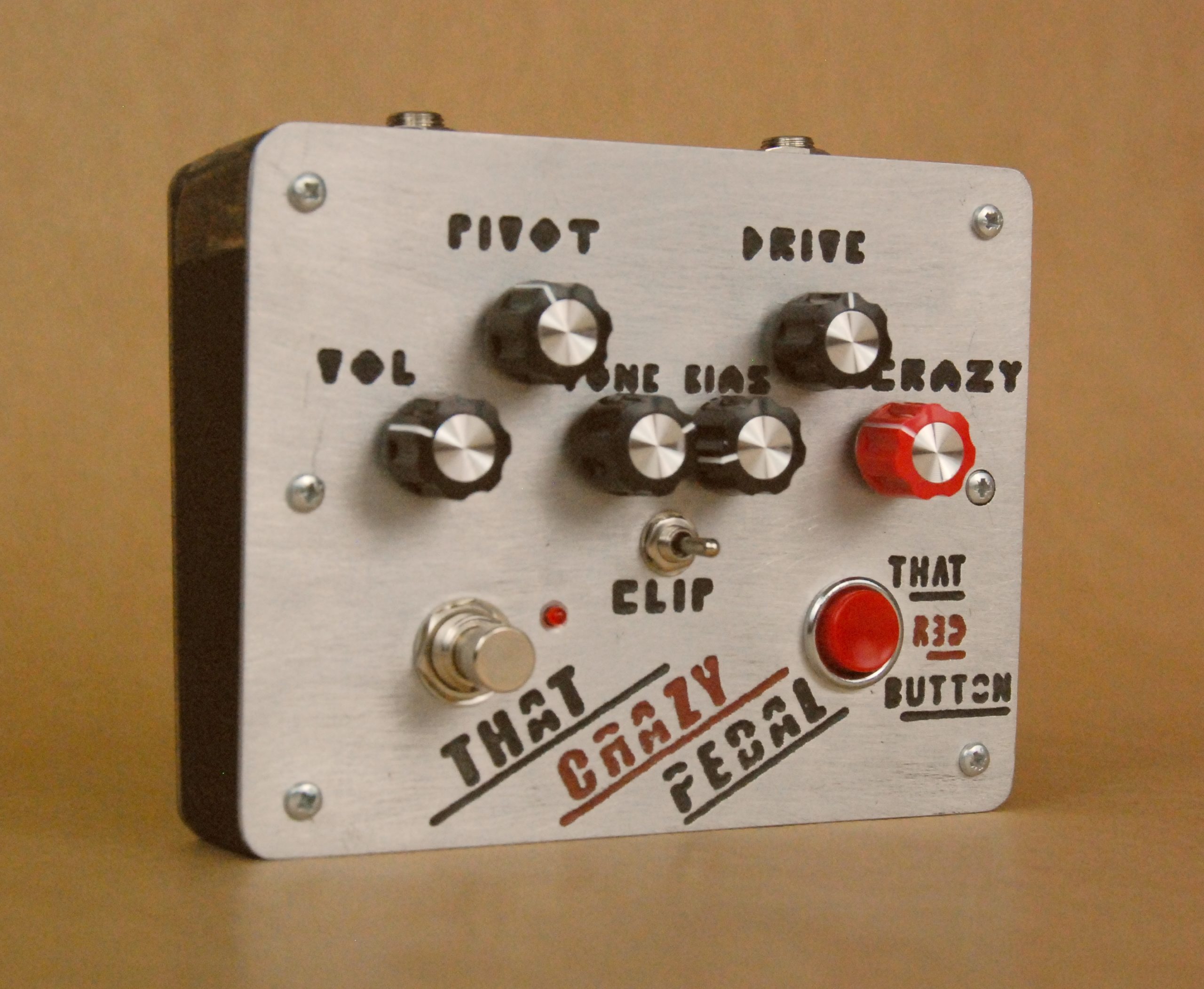
What does the red one do?
– literally everyone
The good kind of crazy
That Crazy Pedal is a handmade overdrive / fuzz / booster with feedback capabilities. At the press of a button, this stompbox will turn into a screaming, sustaining, feedbacking monster – even at bedroom volumes! It can go all the way from a clean boost, through a mild to lush overdrive, to an all-out square wave fuzz. It also does the 8-bit, glitchy, synthy, dying battery kind of fuzz. It’s handmade top to bottom. Solid hardwood enclosure, solid aluminum plate on top. Inside – a custom circuit on a custom PCB.
In a nutshell:
– Instant sustain / feedback at the press of a button. See the video!
– All the way from an almost clean boost to a glitchy square-wave fuzz, with all the overdrive tones in between.
– Vintage, NOS germanium transistors for ultimate tone.
– SUPER loud, will make your tubes scream.
– True bypass.
– Reversed polarity protection.
– A Standard, BOSS type power jack. Works on 9V.
What’s under the hood? A high gain, modern silicon transistor stage pushing two vintage, NOS germanium transistor stages. The pedal has a great spectrum of overdrive and fuzz tones. Its most outstanding feature is the big, red, momentary button. Depending on the position of the “crazy” knob and other settings, it will either boost your tone, sustain it, or sustain it and start feedbacking after a couple of seconds – irrespectively of your amp’s volume! But crank it up, let the natural feedback kick in on top of the artificial one, and listen in awe to what happens when you strike a note. What goes on when you press the red button depends a lot on other settings. Let’s go through them.
On the top plate, you’ll find the on / off true bypass switch, the aforementioned feedback button, six knobs and a three-way toggle switch.
The knobs:
Tone, volume and drive are pretty obvious.
Pivot – it’s the midrange response control. To the left, the midrange is scooped. To the right, it gets boosted. The effect this control will have on your tone depends largely on the tone knob position. The more to the middle the tone knob is set, the more audible effects wiggling the pivot knob will produce.
Bias – it’s the first stage’s bias control. Technically, it changes the way current flows through the transistor. Musically, it allows you to accomplish a couple of things. The most natural position of this knob is at about 9 o’clock. The pedal is loudest then, and the noe is most.. open. Transparent, to use a buzz word. Turn it to the left, and your sound gets muffled. Turn it to the right, and it will get more fuzzy. Now, turn it even further up, and the signal will start dying on you. But wait. Turn the gain knob up, and there you go. Synthy, square-wavy, glitchy fuzz. Perfect to play that Mario theme. With your doom band.
Crazy – as mentioned above, it controls the feedback level – what happens when you press the red button. Its sensitivity depends a lot on other settings – mainly drive and the clipping toggle switch. With drive at noon and the clipping switch in its middle position, the crazy knob will make the pedal start sustaining you notes at about noon, start feedbacking at about 2 o’ clock, and start squealing at a constant pitch when maxed out – all of this when you press the red button.
Last, but not least, the three way toggle switch. It chooses between three clipping diodes arrangements.
To the left, there’s germanium diodes. The pedal gets very quiet, but it’s not something the volume knob won’t help with. What you get on that setting, are all the mellow tones. From an (almost) clean boost, to moderate overdrive, with all the bluesy and jazzy stuff in between.
To the right – silicon dide clipping. Much louder, harsher. Gives a well defined rock distortion.
To the middle – no clipping diodes. The pedal gets super loud, and what happens in this setting is – with the drive knob, you control how much of the pure signal will smash the germanium transistors. Tone-wise, it somewhere between a well defined overdrive and a fuzz. Fantastic sound.
